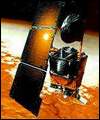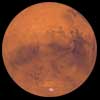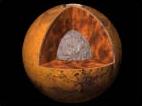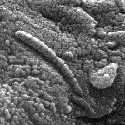 |
Exploration
- Early missions: In 1965, after other
attempts failed, Mariner 4 reached Mars, took close-up pictures, and
ended any hopes of finding canals, cities, Martians. 1965-1971, US
Mariner orbiters; 1989, Soviet Phobos 2 orbiter (Phobos 1
was lost); 1971, Soviet Mars 3 lander; 1976, US Viking landers
($3 billion, 8 years to develop!).
- Recent missions: 1997, Mars
Pathfinder [$225 million, 4 years to develop]; Climate Orbiter,
lost 09.99; Polar Lander, lost 12.99; the Japanese Nozomi abandoned
in 2003 due to technical problems; NASA's Mars
Global Surveyor was in orbit from 1999 to 2006.
- Orbiting missions: NASA's Mars Odyssey
has been operational since 2001, ESA's Mars Express since late 2003 (Beagle
2 lander lost during the descent),
and NASA's Mars Reconnaissance Orbiter since early 2006; Why every
2 years?
- Landing missions: The rovers
Spirit and Opportunity have been on the surface since Jan 2004, the Phoenix
Mars Lander since 2008, Curiosity since 2012.
- Plans: MAVEN (Mars Atmosphere and Volatile Evolution Mission) launch is scheduled for November 2013; More missions are in
the planning stages, including sample returns
to Earth; Issues to consider
are the budget, possible planet contamination; Human missions
are now being considered.
|

_426x73.jpg)

_426x73.jpg)


_233x175.jpg)

_250x251.jpg)

![]()